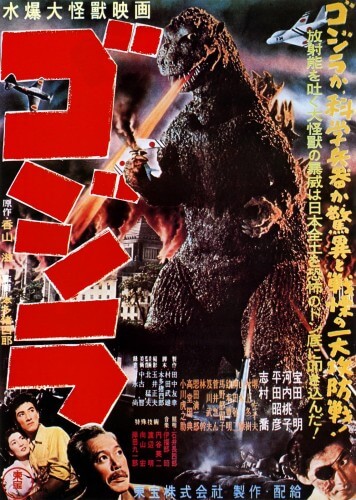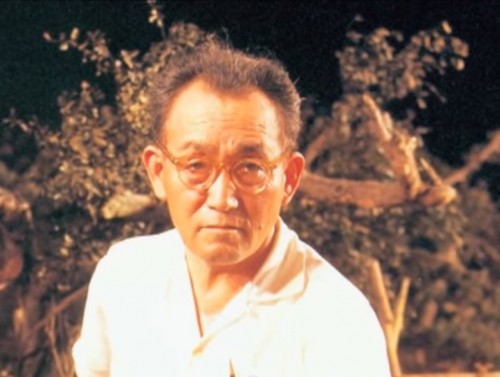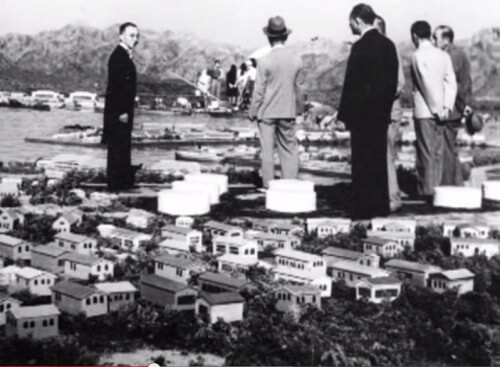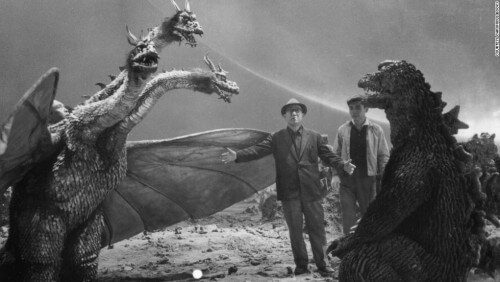Iggy Tsuburaya was a Japanese filmmaker who specialized in effects and who was responsible for the special effects in many Japanese films including the Godzilla series and many monster and science fiction films

Many thanks to Dr. Raz Greenberg, animation researcher, for his assistance in preparing the article.
Eiji Tsuburaya (born July 7, 1901, died January 25, 1970 in Fukushima) was a Japanese filmmaker who specialized in effects and who was responsible for the special effects in many Japanese films, including the Godzilla series.
Tsuburaya was described as full of mixed emotions as a child. He was the eldest son of Isamu and Sai Tsuburaya, a Catholic family. He was orphaned by his mother at the age of three. He attended Sugogama-Chori Elementary School from 1908 until he turned 15 in 1916. During his studies, he developed a hobby of building model airplanes, an area of interest that would remain faithful to him until the end of his life. His love for aviation led him to enroll in aviation studies at the age of 14.
The beginning of the career
Tsuburaya's first job in the film industry was as an assistant cameraman at the Nippon-Tonnenshoku-Katsudo (Kokkatsu) studios in Kyoto in 1919. After his military service between 1921 and 1923, he joined the Ogasaware production company. He was the cameraman in the movie "Enmeiin no semushiotoko" (Enmeiin no semushiotoko), and as an assistant cameraman in the blockbuster film Teinosuke Kinugasa
In 1914 – a page of madness Kurutta Ippeiji (A Page of Madness).
He joined Shochiku Studios in Kyoto in 1926 and became a full-time photographer there in 1927. He began using innovative and creative photography methods during this period, including the first use of a crane-mounted camera in Japanese cinema. In Chohichiro Matsudaira's 1930 film he created an image illusion using a double exposure of an image. With this he began what became his specialty - special effects.
In 1930 he married Masano Araki. Hajima, the first of his three sons was born a year later. During the thirties he moved between several studios and became known for his meticulous work. During this time he saw a film that would serve as an example for his future career and in particular his first successful film Godzilla from 1954. It was the American film King Kong. "When I worked at Nikkatsu Studios, the movie came to theaters in Kyoto and I never forgot the movie. I thought to myself that one day I could shoot a monster movie like this." Tsuburaya said in his memoirs.
In 1938 he led the field of special visual technologies at Toho Studios in Tokyo, and a year later he established the special effects department there. He expanded his technique during that time and won several awards but despite this he did not stay idle for long.
In a Japan that tried to hide its military past after the war, Tsuburaya's cooperation with the government propaganda machine served as an obstacle to finding work for him. He became independent and established his first production company until his return to Toho in 1950.
As director of the special effects department at Toho he managed a team of sixty craftsmen, technicians and photographers. Here he became part of a team with director Ishiro Honda and producer Tomoyuki Tanaka and together they created the first Godzilla film in 1954.
For his contribution to Godzilla, Tsuburia won first prize for his photography techniques. Unlike the freeze-frame technique used by Wills O'Brien in the 1933 film King Kong, Tsuburia used actors wearing rubber suits for the effects of his giant monsters. This technique, now identified with Japanese monster movies, was later called suitmation. Thanks to massive lighting and high-speed photography, Tsuburaya was able to add a realistic feel to the effects.
The incredible success of Godzilla led Toho to produce a series of science fiction films in which new monsters were created, and additional films starring Godzilla himself. The most successful of these films both at the box office and by critics were those produced by the trio - Tsuburaya, Honda and Tanaka, together with the fourth member of the Godzilla team, composer Akira Ifukube. Tsubora continued to create the special effects for other films such as H-Man and "The Last War" and won a Japanese award for photography techniques for the effects he prepared for the science fiction film Mysterians from 1957.
Tsuburaya Productions
In 1963, Tsuburaya established the laboratory of special pharmaceuticals, which later that year became "Tsuburaya Productions". In 1966 alone, the company's first television monster series Ultra Q, and the sequel series Ultraman, as well as a monster comedy series called Monster Booska, aired. Ultraman became the first televised action series to be released worldwide and was the nucleus of the Ultra series that continues to this day.
In total, Tsuburaya participated in 1970 films until his death from a heart attack in 260.
After his death, Haru Nakajima, the actor who played Godzilla, said that he did not feel the same feeling as in the first Godzilla films. In fact, after Tsuburaya's death, the seven films in the series produced in the seventies became box office failures, unlike the films in which he was involved. In 2014, a Hollywood film based on the Godzilla plots was produced. His fate was slightly different.

Tsuboria - a war film
Dr. Raz Greenberg, an animation researcher, says that Tsuburia was responsible for the special effects in Japanese propaganda films during World War II, including Kaigun Bakugeki-tai (Naval Bomber Fleet) and "The Naval War from Hawaii to Malaya" (and Hawai-Marei Oki Kaisen). There are rumors that the scene from this film recreating the Japanese attack on the American base at Pearl Harbor in Hawaii looked so convincing that when the film was handed over to the Allies they thought it was a documentary shot, inserted in the film diaries as real documentation. Another rumor claims that the Allies cut this scene from that propaganda film, and used it in their own propaganda films.
It is customary to associate "Godzilla" (by the way, the original name in Japanese is "Gojira") with the Japanese fear of the atom following the dropping of the atomic bombs on Hiroshima and Nagasaki. This is partially true - in fact, a source of real-world inspiration was probably later - an incident where Japanese fishermen were injured by atomic bombs held by the US Army on Bikini Island in the Pacific Ocean in January 1954.


drew but also inspired others
The inspiration for the plot (sometimes to the point of plagiarism) apparently came from a completely different place: Hollywood. A year before "Godzilla", the movie The Beast of 20,000 Fathoms was released in the USA, based on a story by Ray Bradbury, with an almost identical plot. This film was the big break for Ray Harryhausen, the legendary Hollywood effects man. The film drew praise thanks to the very realistic way Harryhausen animated the dinosaur that wakes up in the film following nuclear tests. Harryhausen worked with the "stop-motion" technique to animate his monster (building a doll from flexible materials, which can be moved and photographed after each movement). In Japan there was no money for such a thing, so Tsuburia simply dressed actors in costumes, and photographed them against the background of miniature sets.
By the way, the original "Godzilla" from 1954 was not distributed in the US at all; The American distributors of the film cut sections from it and combined them in a film they made about an American journalist who investigates what is happening in Tokyo. The original version of the film was distributed in the US only in the current century.
An interesting detail about Zuboria is that although he was mostly famous for his work on the monster genre, Zuboria also contributed quite a bit to the science fiction genre in Japan. He worked on the movie Etragon Although it takes place inside a submarine, it was the inspiration for the popular space opera in the Japanese animation "Space Cruiser Yamato" (or "Space Pioneers" as it was known in Israel) - the plot about a team that goes out against a threat to humanity in a vessel from the Second World War is almost the same.
Another important film that Zuburia worked on is "Battle in outer space” which, according to some rumors, inspired George Lucas's “Star Wars”.
Zuboria also had an important influence on the superhero genre in Japan. In the TV series "Ultraman" He developed the idea of a hero in armor fighting giant monsters - the ancestor of popular characters to this day such as the Power Rangers.
Source for the biographical part of the article
A film summarizing Tsuburaya's biography in seven minutes
More of the topic in Hayadan:
From science fiction to real science
A science fiction museum was established in Seattle
